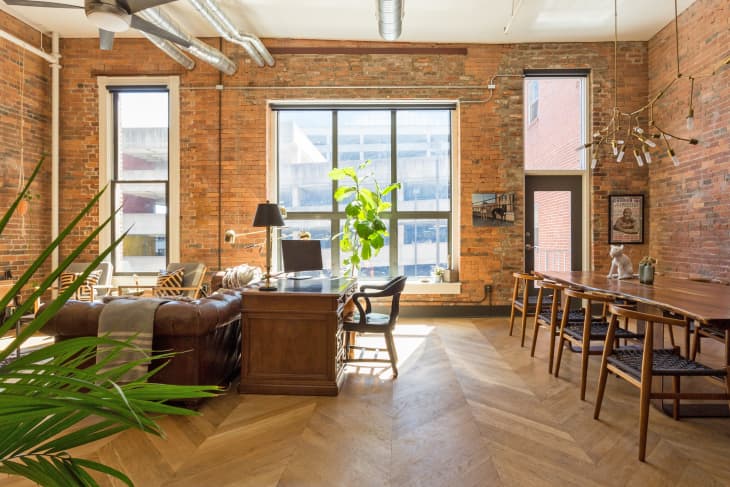What Makes a Loft a Loft?

If the first thing you think of when you hear the word loft is artists and free spirits living out their boho dreams in a SoHo, you’re not alone. Many people associate the dwelling with images made popular by ’80s- and ’90s-era rom-coms, and perhaps more recently, “New Girl”. But lofts are a much different beast than the ones we’re used to seeing on the big screen.
What is a loft?
Lofts are different from other types of apartments thanks to their very specific architectural style, explains David Whitelaw, a real estate advisor with the Atlas Team at Compass Florida. “The walls in a loft typically don’t go all the way to the ceiling and the format is very open-concept,” he says. While lofts can have second-floor bedrooms that overlook the main living space, it’s not a requirement. “The traditional loft is an open-concept industrial space that has been transformed into a residential apartment with high ceilings and features including exposed brick, metal beams, and polished concrete floors,” he adds. And they can come in a variety of shapes and sizes.
So, what’s a loft bedroom?
Loft bedrooms however, are something different. According to Melissa Sofia, a broker with The Avenue Home Collective, the word loft is most accurately used to describe the space that is directly under the roof of a building. “In a residential home it is most often seen as an open room on an upper floor that has flexible use as an office, media room, or family play area and is arguably one of the most desirable features buyers are looking for in a home today,” she says.
A brief history of loft living
You may be thinking of homes featured in movies like “Big” and “Ghost”: open-style with raw floors, peeling paint, and the ever elusive 90s staple, rent control. “While [these types of lofts] did exist in the ’80s and early ’90s, most are long gone,” says Danelle Davis, a loft specialist and licensed real estate salesperson at the Corcoran Group in Brooklyn. Not only has the price per square foot changed, but the traditional loft design has been retooled by builders and developers, and many of those once affordable loft buildings have been converted into luxury rentals and condos.
The Pros of Loft Living
In addition to their unique construction, lofts offer residents a lot of room for creativity and change. “I’m a purist when it comes to lofts and I, too, consider a loft an authentic, open space that allows you to choose where you’ll have your living, dining, sleeping and working space,” Davis says. “I always say, ‘An apartment designs you, but you design a loft.’”
A loft will allow you to shift around your sleep, work, and dining spaces whenever inspiration strikes. And a loft can expand with your wants and needs, unlike an apartment with fixed walls and doors, which won’t allow much room for change or growth.
“As a real estate agent, it’s my job to help people see what that blank slate can become,” Davis adds. “Over the years, I’ve seen divisions of space created by giant fish tanks, walls of plants, custom built wall units, L-shaped walls on casters… even 5-foot divider walls built of the glass cubes you see in office spaces and subways.”
The Cons of Loft Living
Lofts may not be a good fit for those working remotely. After spending years working from home, many people have realized that they need the separation between their living spaces and their work spaces, which is hard to come by when you’re living in a loft.
And lofts don’t offer much seclusion when you’re enjoying your space recreationally, either. If you’re watching television in the living room, chances are that everyone else in the loft is as well, even if they’re fixing a meal in the kitchen or trying to read quietly at the dining room table.
Is a loft right for you?
While anyone can live in a loft, Whitelaw says that they typically draw interest from single individuals or recently married couples without children. “They are generally positioned in lively areas with easy access to dining, entertainment, and a lot of activity nearby so they are a fit for anyone looking for this kind of lifestyle,” he says.
Due to their architectural makeup, lofts generally have a lot of exposed surfaces like metals, polished floors and larger windows which leads to more sound echoing in the apartment — something you may be looking to avoid if you have a house full of kids.